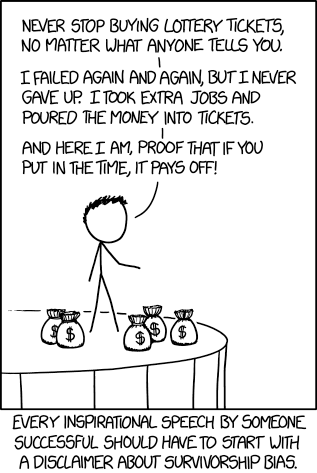Throughout my career in software, I have learned that technical debt is not just an unavoidable consequence of software development, but a necessary part of it. To innovate and grow, sometimes we need to make strategic decisions that trade what I often term “the practical for the perfect”. However, if you never pay it down, technical debt can accumulate and become a barrier to progress. Here are some effective strategies that I’ve found in order to manage technical debt.

1. Acknowledge and Track Technical Debt
The first step in managing technical debt is acknowledging its existence. It’s crucial to keep an open dialog about it within your team and make it part of the development process. Technical debt needs to be tracked work items in whatever system you work from (Jira, Trello, etc). Whatever you do, these decisions cannot just become “tribal knowledge” that can get lost with time. It should be documented what debt you incurred – and why – as well as what changes are needed when time is allotted.
2. Prioritize Debt Payment
All debts are not created equal. Some can cripple your progress and make your system impossible to change, while others are just a little annoying. Therefore, prioritizing which debts to pay first is essential. Just like paying of credit card debt usually involves some classification of interest rate, balance, etc, you should create a classification to rate and prioritize your technical debt across metrics that are valuable to you and your organization.
3. Regular Refactoring
Code refactoring is a critical practice in controlling technical debt. I encourage my developers to refactor as they go, which can often eliminate stray technical debt. For example, we may have created an inflexible “hack” method to get something done in the moment that was supposed to be a “one-time-only” deal. But, you know how those things go. Soon, there is a “second time only” and instead of making another “hack” method, we encourage a refactoring to make the first method more flexible and allow it to solve both scenarios (as well as future ones).
4. Dedicated Time for Debt Reduction
We’ve found it helpful to allocate dedicated time for addressing technical debt. Depending on the organization and the amount of debt, we have literally limited the amount of “new” work we would allow to be added to a sprint and included time for developers to work on tech debt work items. This not only helps in debt reduction but also encourages developers to take ownership of their code.
5. Continuous Integration
CI (Continuous Integration) can help prevent the accumulation of technical debt by catching problems early. Including an automated test suite that runs whenever changes are made gives developers immediate feedback if they’ve introduced an issue.
6. Code Reviews
Peer code reviews are an excellent practice to prevent the introduction of new technical debt. A second pair of eyes often catches potential issues that the original developer might have missed.
7. Invest in Training
Piggy-backing a little off of number 6… A well-trained development team is less likely to create technical debt in the first place. Continued training and learning is an investment to reduce future technical debt, as well as a great way to keep your team engaged and let them know that you’re interested and invested in their careers.
8. Quality over Speed
While it’s important to deliver quickly in a competitive environment, sacrificing code quality for speed is a recipe for technical debt. I tend to emphasize the importance of good coding practices, and remind our teams that “quick hacks” can and will cause problems down the line. It doesn’t mean that we can’t ever take a tradeoff, but we need to know the rules so that we can bend/break them strategically.
9. Documentation and Knowledge Sharing
Good documentation is another good way to control technical debt. Clear, concise, and up-to-date documentation of systems, architecture, and codebases reduces the chances of duplicating efforts or making uninformed decisions that can add to technical debt. Consider having knowledge sharing sessions within your team to ensure everyone understands the system and its quirks.
10. Tech Debt Retrospectives
Periodically, it is a good idea to have a Tech Debt Retrospective to consider the kinds of things that repeatedly add to tech debt and how the team is progressing on paying it down. This can be a useful way to see harmful patterns and create ways to prevent them.
(Bonus) Balancing Business Needs and Tech Needs
Lastly, it’s essential to remember that while technical debt should be managed, business needs often require making trade-offs. By maintaining an open dialog with the product team, we can strike a balance between delivering new features and keeping technical debt in check. We are paid to help the business, not just “build cool stuff” and “pad our resumes”. Falling too far to one side or the other can be a disaster. Too tech-focused and you can build something that is of no use to anyone (or worse… something that never gets finished due to IT Navel Gazing). Too business-focused and you build something that lacks utility for anything other than yesterday’s problems. Find the balance, learn to “speak business”, and find the compromises.
Technical debt management is ongoing and is about developing a mindset and behaviors that consider long-term implications while making short-term decisions. Remember, the goal is not to completely eliminate technical debt, but to keep it under control so it doesn’t hinder your team’s progress and your company’s growth.
 One of the things that we – as workers – hate the most is the micromanager. What is funny is that most people who micromanage others don’t like to be micromanaged themselves. So, why do they do it? Is it effective, despite the backlash? Is it just poor management? Is it a fallback tactic? I can’t claim to have the definitive answers, but here are my thoughts.
One of the things that we – as workers – hate the most is the micromanager. What is funny is that most people who micromanage others don’t like to be micromanaged themselves. So, why do they do it? Is it effective, despite the backlash? Is it just poor management? Is it a fallback tactic? I can’t claim to have the definitive answers, but here are my thoughts.
 This week, I was listening to a business podcast and the guest was describing the “techniques for success” that they had used and how they now teach those techniques to others. As I began to wonder how much of this (and all such advice) was attributable to Survivorship Bias and planning this post in my mind, I started to think about what image should go with it. Of course there is a
This week, I was listening to a business podcast and the guest was describing the “techniques for success” that they had used and how they now teach those techniques to others. As I began to wonder how much of this (and all such advice) was attributable to Survivorship Bias and planning this post in my mind, I started to think about what image should go with it. Of course there is a  I know from just about everywhere that people just aren’t that in to reading anymore. Even when people are consuming books, audio books are a growing segment. From recent data that I looked up, the median number of books consumed per year is just 5. Half the people in America consumed less than five books last year. I typically average around a book a week. Are they all code-related? No. They aren’t even all non-fiction. I read quite a bit of fiction as an outlet for my imagination, as I watch less and less TV every year. I know that I’m not typical, so I want to try to be a little pragmatic here.
I know from just about everywhere that people just aren’t that in to reading anymore. Even when people are consuming books, audio books are a growing segment. From recent data that I looked up, the median number of books consumed per year is just 5. Half the people in America consumed less than five books last year. I typically average around a book a week. Are they all code-related? No. They aren’t even all non-fiction. I read quite a bit of fiction as an outlet for my imagination, as I watch less and less TV every year. I know that I’m not typical, so I want to try to be a little pragmatic here. Why is the average age of a developer so much less than the average age of a professional worker in the United States? Is it because the industry as a whole is striving to keep people out? Are companies replacing people as soon as their salary starts to get higher with people who make half as much and will work twice as many hours for the same salary? Check out what I think about it in this week’s episode.
Why is the average age of a developer so much less than the average age of a professional worker in the United States? Is it because the industry as a whole is striving to keep people out? Are companies replacing people as soon as their salary starts to get higher with people who make half as much and will work twice as many hours for the same salary? Check out what I think about it in this week’s episode.
